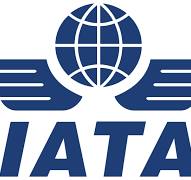The International Air Transport Association (IATA) today released data for May 2025 global air cargo markets, revealing a continued upward trend in demand despite the dampening effect of shifting trade policies. Total demand, measured in cargo tonne-kilometers (CTK), rose by 2.2% compared to May 2024 levels. International operations saw an even stronger increase of 3.0%.
Capacity, measured in available cargo tonne-kilometers (ACTK), also saw growth, increasing by 2.0% compared to May 2024, with international operations expanding by 2.6%.
“Air cargo demand globally grew 2.2% in May. That is encouraging news as a 10.7% drop in traffic on the Asia to North America trade lane illustrated the dampening effect of shifting US trade policies. Even as these policies evolve, already we can see the air cargo sector’s well-tested resilience helping shippers to accommodate supply chain needs to flexibly hold back, re-route or accelerate deliveries,” said Willie Walsh, IATA’s Director General.
Operating Environment Factors:
Several key factors influenced the air cargo market’s performance in May:
- Industrial Production: Year-on-year, world industrial production increased by 2.6% in April 2025. Notably, air cargo volumes grew by a robust 6.8% over the same period, significantly outpacing global goods trade growth of 3.8%.
- Jet Fuel Prices: Jet fuel prices in May 2025 were 18.8% lower than the previous year and 4.3% below the previous month, offering some relief to operational costs.
- Manufacturing PMI: Global manufacturing contracted in May, with the Purchasing Managers’ Index (PMI) falling to 49.1, below the 50-mark that signals growth.
- New Export Orders: New export orders remained in negative territory at 48, reflecting ongoing pressure from recent U.S. trade policy changes.
May Regional Performance:
Regional variations in air cargo performance were evident:
Asia-Pacific airlines led the growth, seeing an 8.3% year-on-year demand increase for air cargo in May, the strongest growth across all regions. Capacity in the region increased by 5.7% year-on-year.
North American carriers experienced a -5.8% year-on-year decrease in demand, the slowest growth of all regions, with capacity also decreasing by -3.2% year-on-year. This decline was largely attributed to shifting US trade policies impacting the Asia-North America trade lane.
European carriers saw a 1.6% year-on-year demand growth for air cargo in May, with capacity increasing by 1.5% year-on-year.
Middle Eastern carriers recorded a 3.6% year-on-year increase in demand for air cargo in May, while capacity grew by 4.2% year-on-year.
Latin American carriers reported a 3.1% year-on-year increase in demand growth for air cargo in May, with capacity increasing by 3.5% year-on-year.
African airlines saw a 2.1% year-on-year decrease in demand for air cargo in May, though capacity increased by 2.7% year-on-year.
Trade Lane Dynamics:
The significant decrease in the Asia-North America trade lane was anticipated, as the effects of “front-loading” (moving goods in advance of tariffs) faded and changes to the de-minimis exemption on small package shipments (particularly for e-commerce) were enforced. Despite this, as cargo flows reorganized, several other route areas responded with surprising growth, underscoring the sector’s adaptability.




